Posts categorized “Installation”.
Image links to projects:
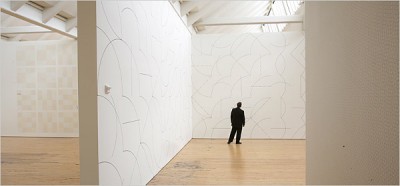
http://graphics8.nytimes.com/images/2007/04/20/arts/design/21lewi600.jpg
Drawing Series… by Sol LeWitt (Wall drawings at Dia: Beacon, NY)
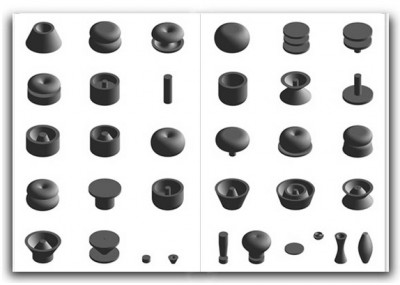
Univers Revolved by Ji Lee (Three-dimensional alphabet)
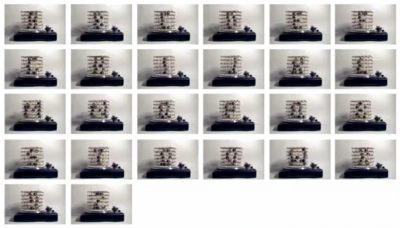
On/Off by Hoax (Series of typographic experiments)
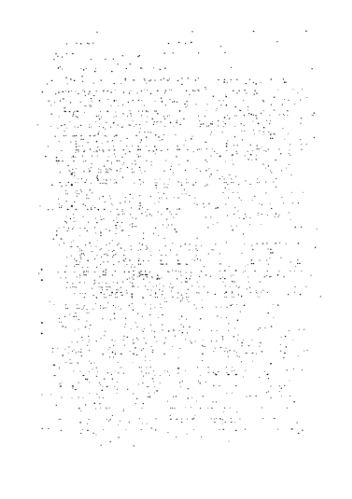
All The Dots, Document 1 by Alex Dipple (Conceptual Art)
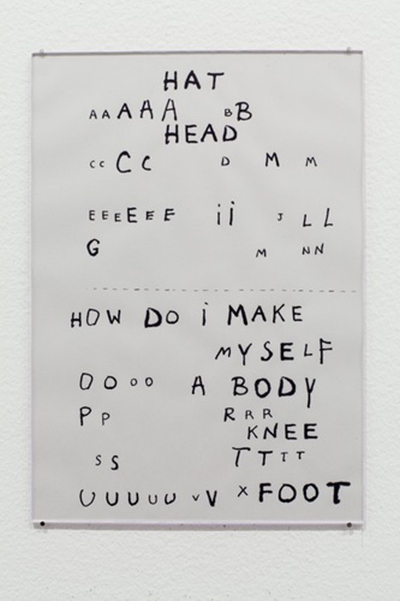
Projects 94 by Henrick Olesen (Installation at MoMA, NY)
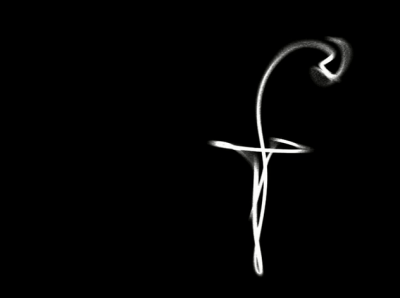
Letter Flow by Roi Sabarov (Four-dimentional typography)
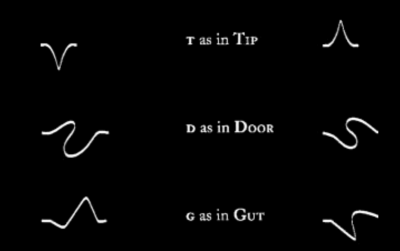
Takeluma by Peter Cho (Sound symbolic alphabet)
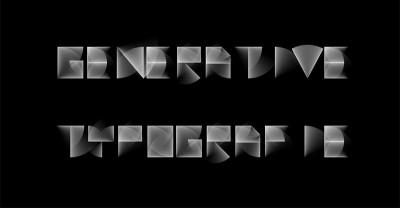
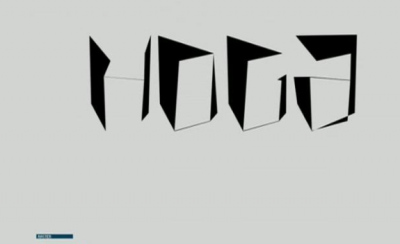
Generative Typografie at UoAS Mainz, Germany
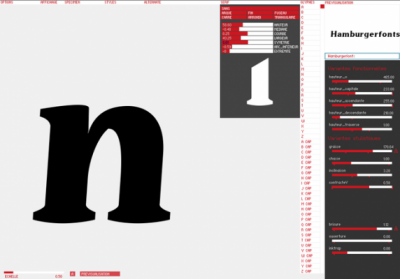
prototyp-0 by Yannick Mathey (Automated type design/ tool)
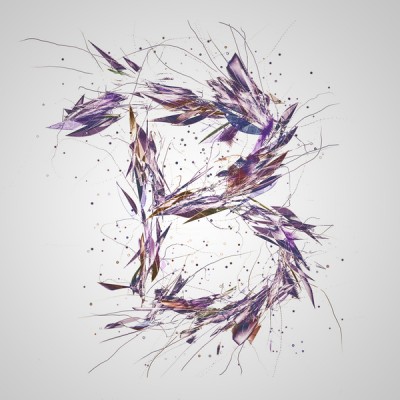
Process: Typeface by Randall Church (Generative Typography)
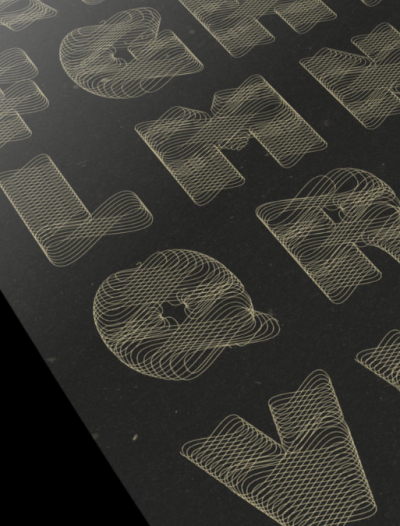
Lemniscate by Rosy Gorolova (Typeface)
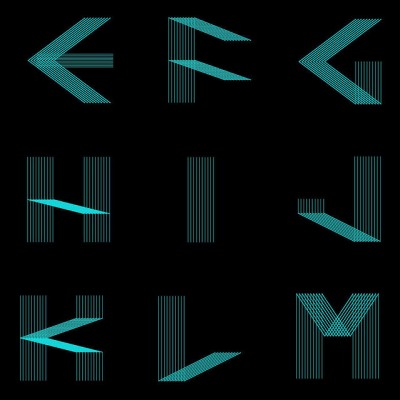
Processing: Font code2 by Capo Luiz (Computational Typography)
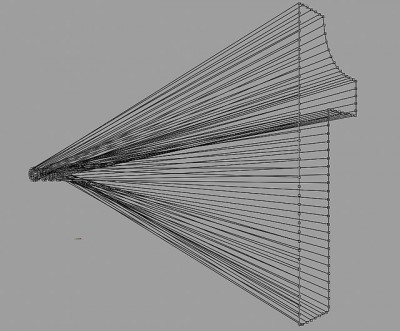
one=1 by onebyone gallery (Installation)
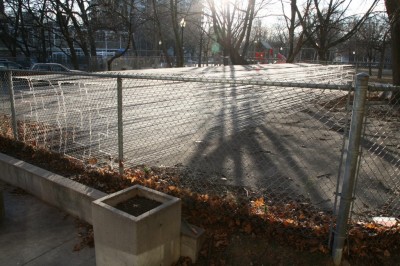
FREE by Sean Martindale (Installation)
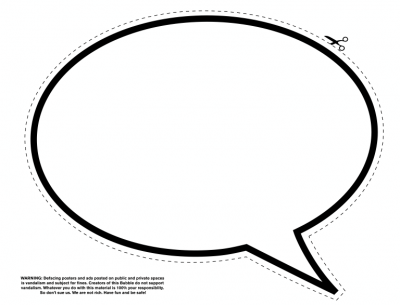
The Bubble Project by Ji Lee (Streetart)
Posted on September 12th, 2011.
Categories: Favorites, Generated, Installation, Interactive, Processing, Research, Tools, Writing.
...................................................................................................................................
Image links to projects:
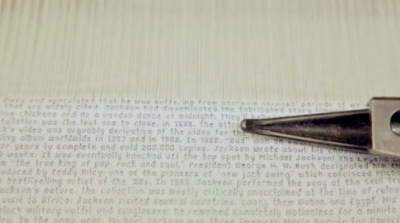
Font Of The Loom by Bertjan Pot (Woven typeface, Wikipedia text tablecloths)
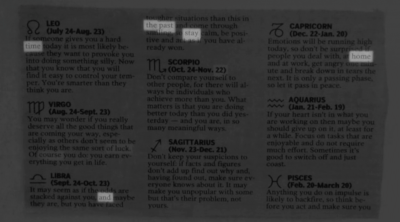
Illumination by Jack Kalish (Generative poetry installation)
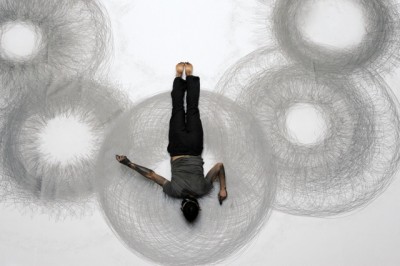
Penwald Drawings by Tony Orrico (The body as drawing tool)
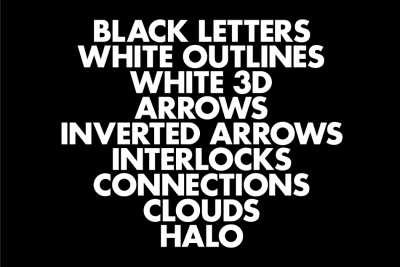
9 Steps To Perfection by Dennis Payongayong
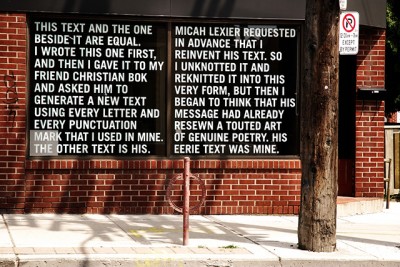
Collaboration between Micah Lexier and Christian Bok
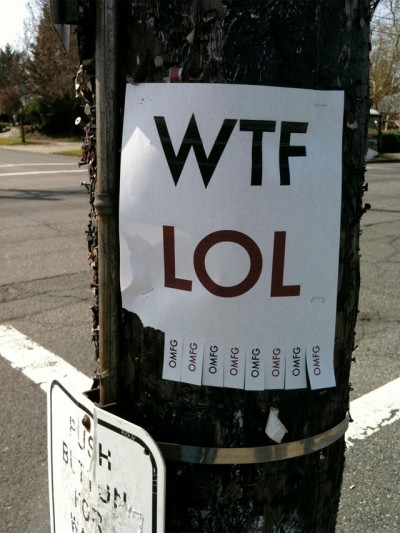
Useless Fliers by Josh Millard
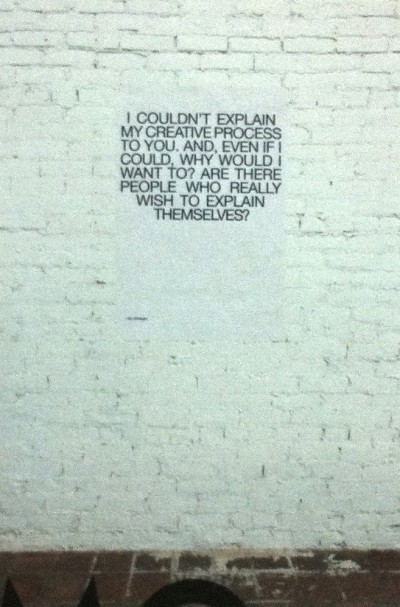
ReFusing Fashion by Rei Kawakubo
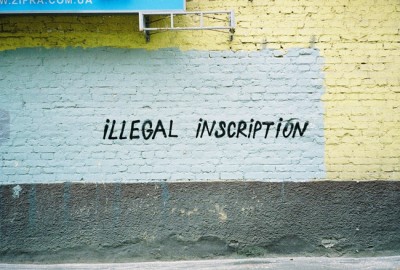
Spray on the wall by Sasha Kurmaz (Conceptual street art)
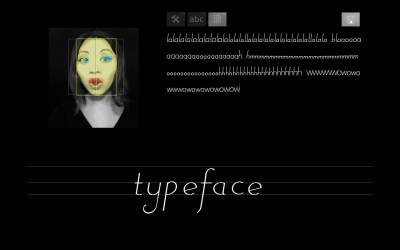
Typeface by Mary Huang (Generative type design)
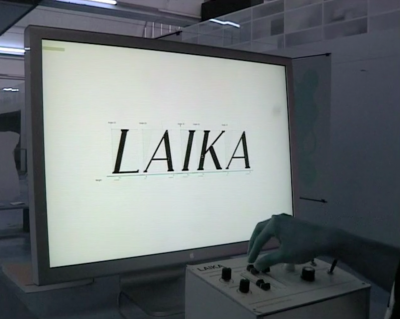
Laika by Nicolas Kunz and Michael Flückiger (Dynamic type design/ tool)
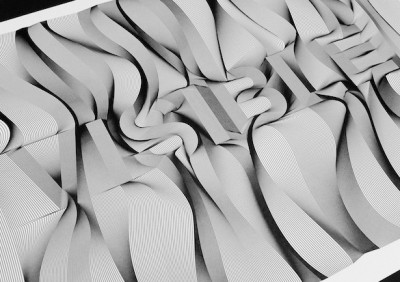
Good Typeface Is Invisible by cooee (Typographic poster design)
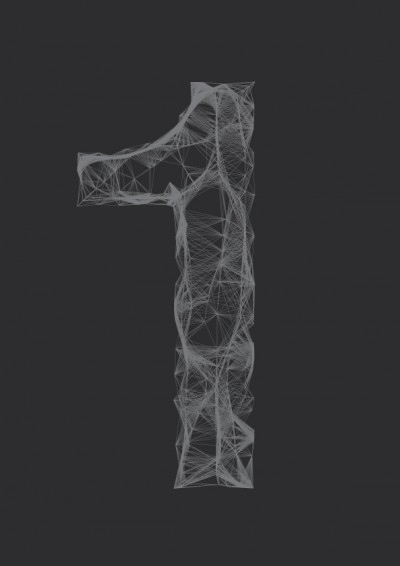
skNumber by Megumu Otani (Generative typography)
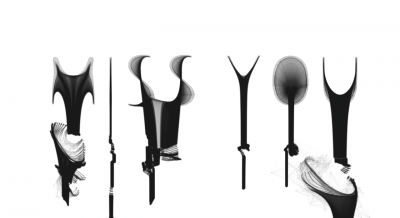
mis.shap.en.ness by Reza Ali (Generative typography)

Letter Mapping by Sam Ford (Generative Typography)
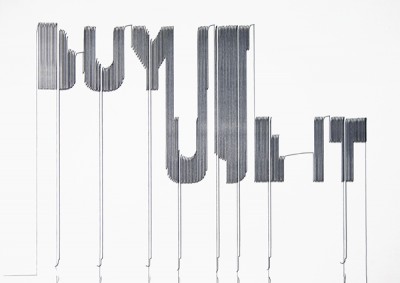
PenJet by Daniel Maarleveld, Jaan Evart, Julian Hagen (Printer head drawn type)
Posted on June 6th, 2011.
Categories: Favorites, Generated, Installation, Resources, Writing.
...................................................................................................................................
Image links to projects:
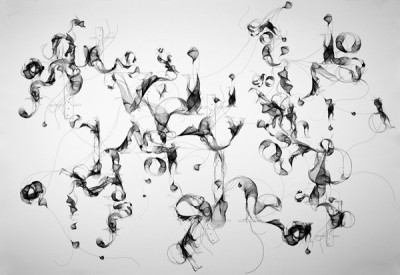
Lettering by Tania Alvarez
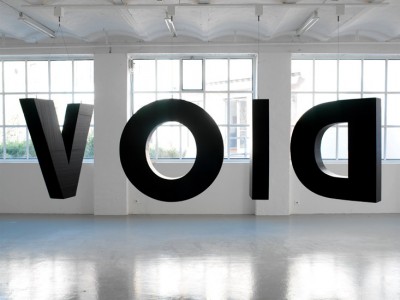
Typographic work by Christian Robert-Tissot
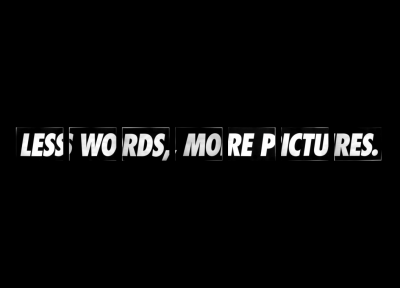
Paul Snowden at 7000WORDS
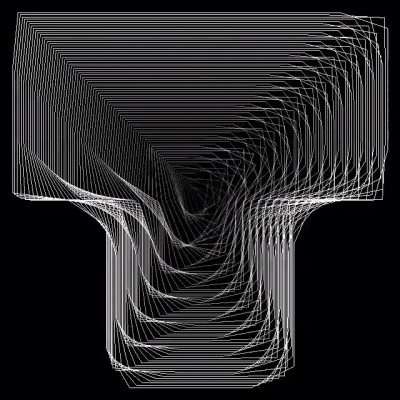
You’re Just My Type by Jonathan Brandel (inspired by TYPE+CODE and Pyramid Typeface)
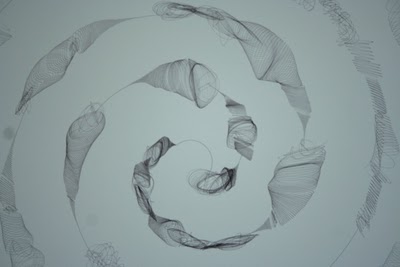
Spatial Vibration developed in Olafur Eliasson’s studio
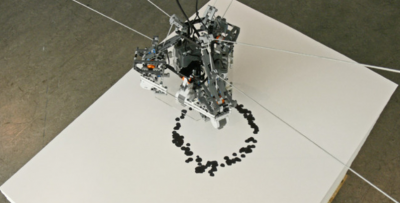
Roboter installation Dotje by Nils Völker and Christien Meindertsma
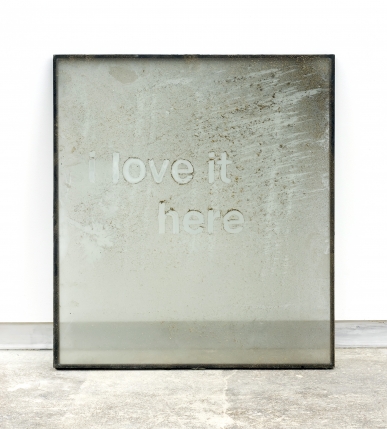
I love it by Ethan Breckenridge
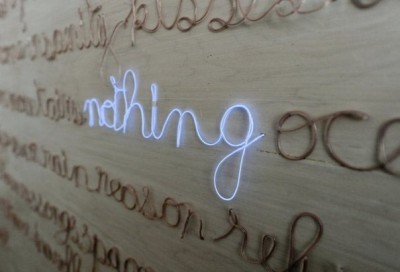
Neon clock by Mouna Andraos
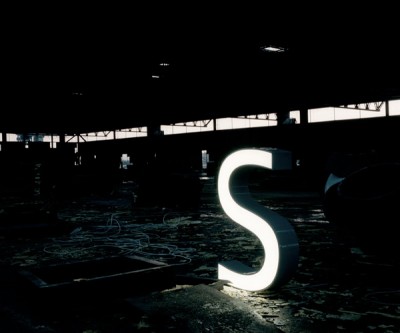
Character shop

Typographic film project Anthem for Absolut directed by Rupert Sanders
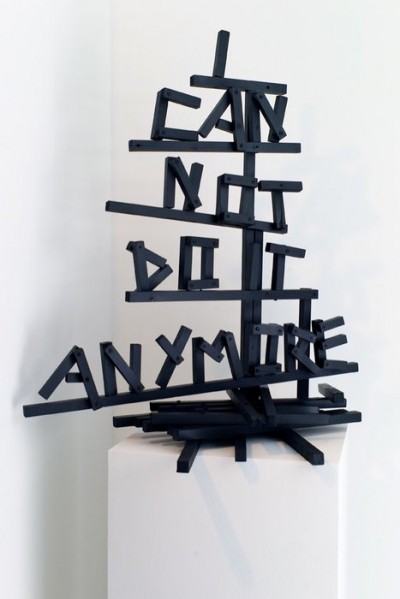
Wooden sculpture by Olaf Breuning
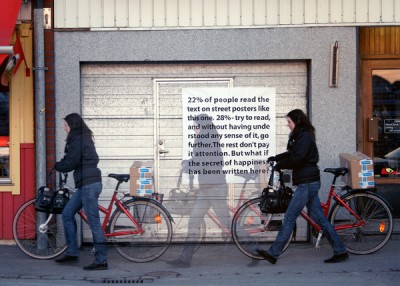
Public Poster Project by Egor Bashakov
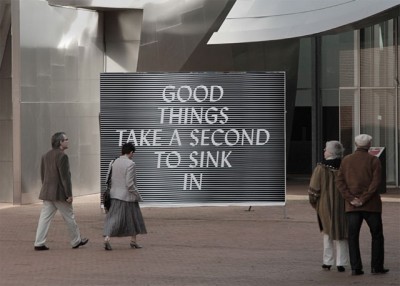
Billboards by Tim Rehm and Tim Sürken
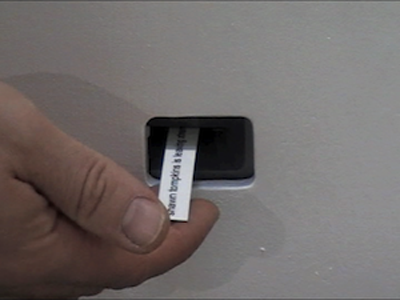
Various interactive typographic works by Jörg Piringer
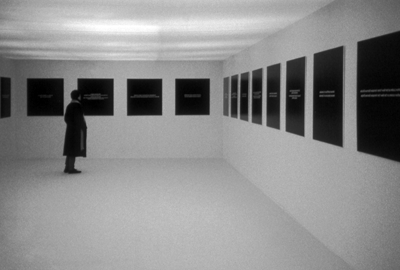
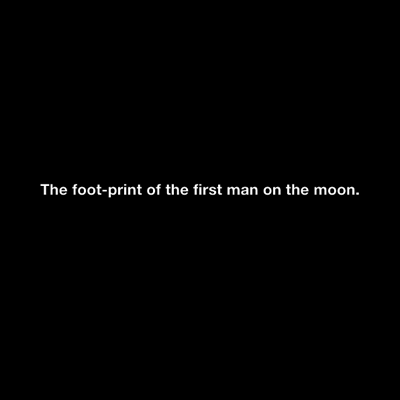
Pictures In Our Minds by Michael Schirner
Posted on August 13th, 2010.
Categories: Favorites, Generated, Installation, Interactive, Poster, Postscript, Processing.
...................................................................................................................................
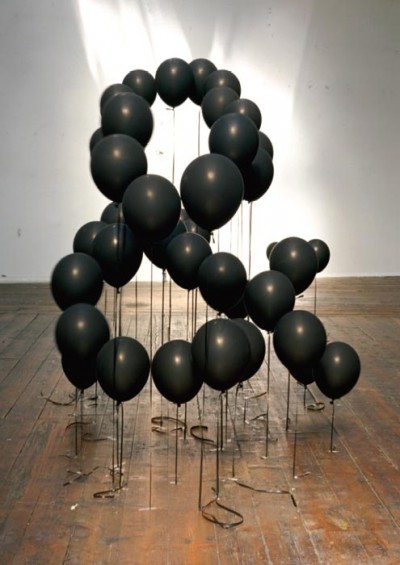
http://www.conoranddavid.com/images/large/000003A.jpg
by Conor&David
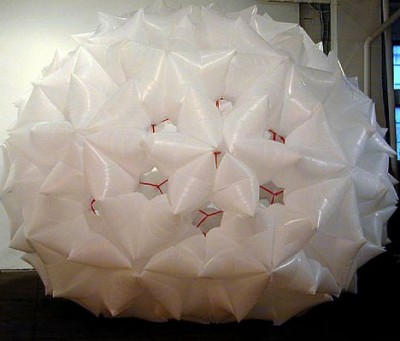
http://mocoloco.com/art/archives/steinhilber_apr_05.jpg
by Dan Steinhilber
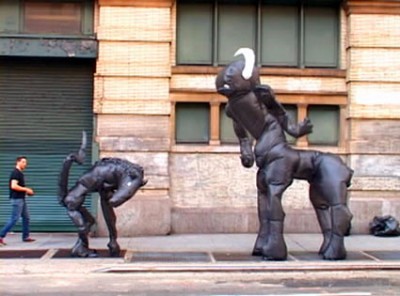
http://nymag.com/daily/entertainment/2008/07/video_street_artist_joshua_all.html
by Joshua Allen Harris
Dan Steinhilber works with all kinds of everyday materials and objects like trash-bags, bottles or paper-cloth-hangers. He uses them as modules or media to create abstract organic sculptures.
Street artist Joshua Allen Harris even brings his creatures made of garbage bags and tape to life.
He tapes them to a sidewalk grate and every time the subway passes the underground exhaust inflats and animates the sculpture that first just looked like ordinary trash on the street.
Posted on December 23rd, 2008.
Categories: Favorites, Inspiration, Installation, Research.
...................................................................................................................................
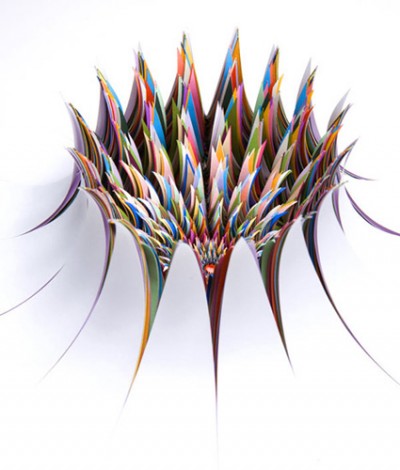
http://www.jenstark.com/sculpture_17.html
by Jen Stark
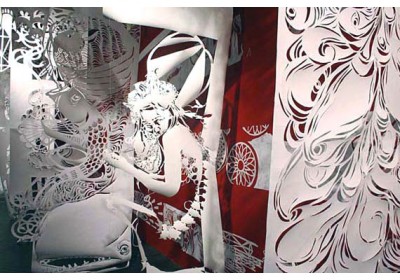
http://www.deitch.com/files/slideshows/swoon_work_5.jpg
by swoon
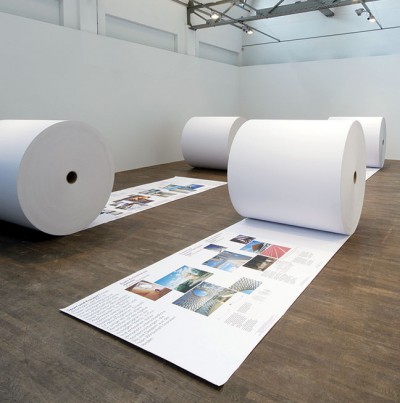
http://www.123buero.com/img/projects/PublicProjects/PublicProjects_06.jpg
by 123buero
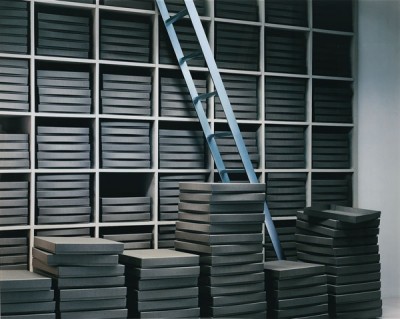
http://www.thomasdemand.de/
by Thomas Demand
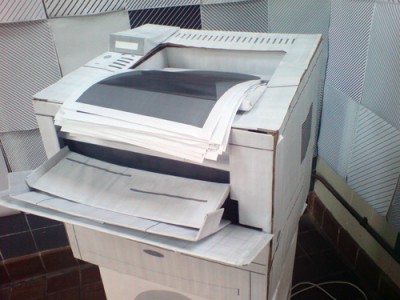
http://www.fredriksterner.com/Bildmaterial/odetolaserprinter/laser3.jpg
by Fredrik Sterner
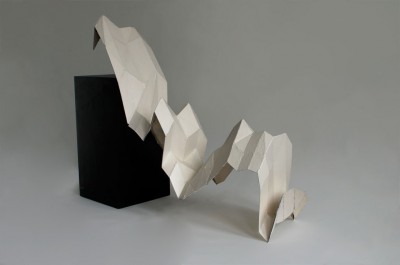
http://anfischer.com/wp-content/uploads/indizes/anfischer_indizes_1.jpg
by Andreas Fischer
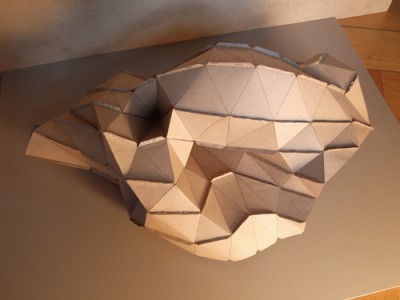
http://www.deffekt.ch/wordpress/wp-content/gallery/p8/p7181409.jpg
by Martin Fuchs / deffect
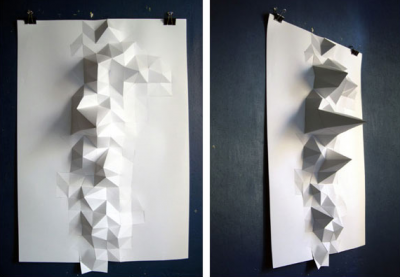
http://www.pierrevanni.com/portfolio.jpg
by Pierre Vanni
Paper sculpturing has become commonplace in contemporary visual culture. Paper is not only seen as planar two-dimensional canvas any more to write, print or draw on. It rather becomes an affordable and multi-functional material for uses such as building miniature models to sculpture surfaces and large scale objects. Artists using paper as their favorite medium come from very different fields. Swoon is part of an international street art scene but also gets featured in various galleries. On the street the decay of the material becomes part of the artwork what is not given in the gallery though. So location influences the aesthetics of her work.
In Thomas Demands photographic work, paper and location play a very different role. He uses paper to build exact models of locations that were specific happenings once took place. Lightning and perspective let the photographs look almost like reality.
The examples of Andreas Fischer and Martin Fuchs applied digital production methods and used data input to create specific shapes. Thus paper sculpture becomes a kind of physical representation of information graphs or mathematical calculation.
Robert Lang talks about Origami as art-form or form of sculpture which has been around for hundreds of years but totally changed it’s face once combined with mathematics. The mathematic rules of modern Origami however could be defined in simple four laws: The two colorability, at any interior vertex the ‘mountain-’ and ‘valley-folds’ always differ two, angles around a vertex sum up to a straight line and a sheet can never penetrate a fold (no self-intersection at overlaps).
These rules are as simple as an computer could understand them what makes Origami a mean of digital production, rapid prototyping and simulation not only in areas like science and technology.
To enable a kind of origami on demand Robert Lang developed ‘treemaker’ - a program to generate crease patterns after a given definition of a stick-figure-like version of one’s design. The basic principal of a crease pattern is to create as many flaps as needed for the final object so what ‘treemaker’ mainly does is to calculate and output the packing of circles on the sheet.
(www.ted.com/index.php/talks/robert_lang_folds_way_new_origami.html)
Posted on December 21st, 2008.
Categories: Favorites, Inspiration, Installation, Poster, Research, Theory.
...................................................................................................................................
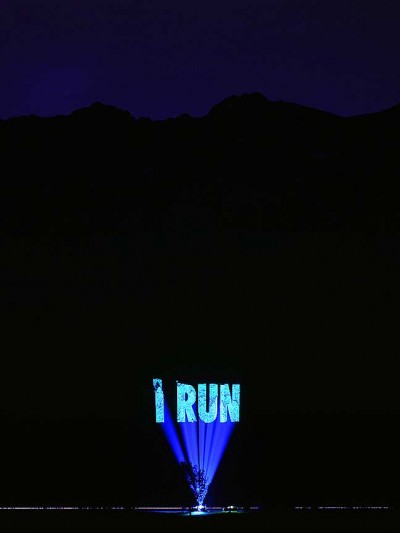
http://www.pbs.org/art21/slideshow/popup.php?slide=1475#
Jenny Holzer’s medium is writing. Wheather it is street posters, LED, projections or everyday objects like T-shirts or cups.
The artist’s writings are truisms, sayings, various statements appearing as poetry-like phrases. But Holzer clearly distinguishes her art from poetry or literature in general because ‘it has to do with the demands of the medium on which I place it.’ By applying media that is commonly used in advertising she found a way to communicate explicit statements about society in a minimalistic manner and to question how those media affect information.
With Xenon light she is also able to create large environmental projections on buildings or landscapes.
Until New Year 2009 the Guggenheim in New York as well features Jenny Holzer’s work on the outstanding facade of the museum.
www.guggenheim.org/new-york/exhibitions/on-view-now/for-the-guggenheim
An example of her usage of online media is ‘please change believes’ where you can edit and contribute truisms. adaweb.walkerart.org/project/holzer/cgi/pcb.cgi
Posted on December 3rd, 2008.
Categories: Installation, News, Research, Theory.
...................................................................................................................................
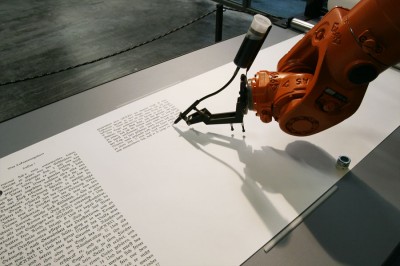
http://www.robotlab.de/bios/pics/bios-zkm04.jpg
Robotlab uses robots to draw or write in the way of a human hand. The installation ‘bios [bible]‘ basically contains of an industrial robot equipped with a stylus and a number of paper scrolls. The robot writes down the bible’s text in a calligraphic script akin to those monks originally used to apply. He does this with immense precision throughout seven months to continue all 66 books.
The project is to reflect the link between Religion and Rationalism in which the Script had always played a special role. Further is explained that the very first script on a computer in the basic input output system (bios) means the origin for every function of the computer later on.
Video of robotlab at ZKM:
www01.zkm.de/robotlab/video/bios/bios-bible_02_480×360_h.mov
Posted on November 11th, 2008.
Categories: Installation, Research.
...................................................................................................................................
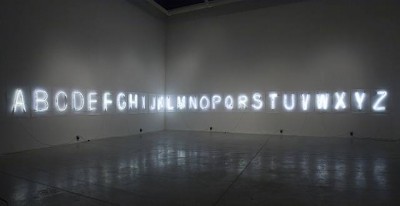
http://www.fionabanner.com/works/everywordunmade/image01.jpg
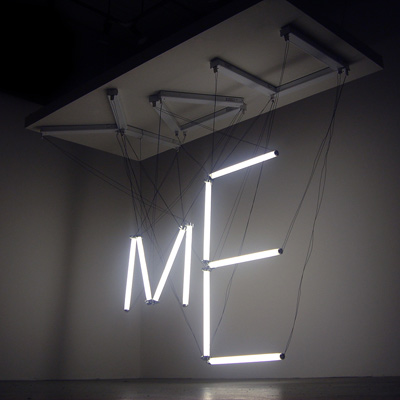
neuture.com/root/saved/114090207_776ec6a1f7_o.jpg
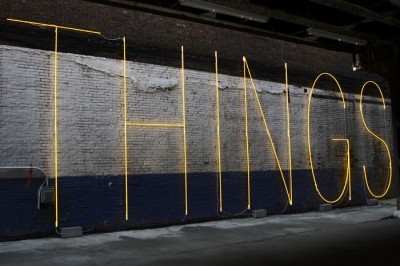
http://farm2.static.flickr.com/1415/1368261064_4cf9773d30_o.jpg
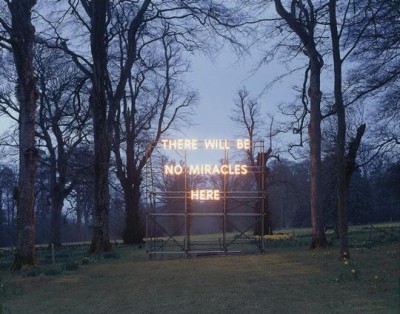
http://www.doggerfisher.com/uploads/pictures/529_large.jpg
The neon alphabet on the top is an installation by Fiona Banner titled ‘every word unmade’. The impression of stuttered words is stressed by the unprofessional manufacturing: The letters clearly depict the artists struggle to control the media - the glass as well as the language.
Banner about her work: ‘I was thinking about a kind of unmaking of language. as if you could make every word, or story imaginable, from these 26 letters. All the potential is there, but none of the words.’
Posted on November 8th, 2008.
Categories: Installation, Research.
...................................................................................................................................
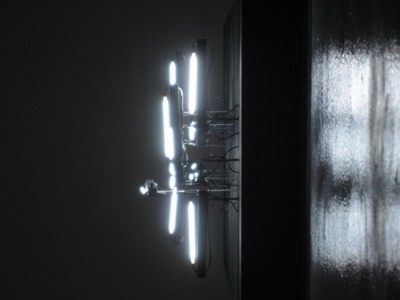
http://robseward.com/documentation/home/
YWD contains of kinetic typographic sculpures made of wood, metal, fluorescent lights and electronics.
In certain moments the automated formation of the lights result the words ‘You’ ‘Will’ ‘Die’. Video on robseward.com/documentation/ywd
Posted on October 20th, 2008.
Categories: Inspiration, Installation, Research.
...................................................................................................................................
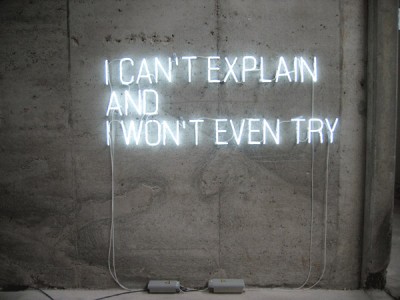
http://www.stefanbruggemann.com/work/images/tp/036.jpg
Stefan Brüggemann is one of the representatives of the neo-conceptual art movement who produces polemic and often provocative works mainly with texts or ‘ghost-words’. ‘Ghost-words’ he explaines are “those words that stay in your mind most of the time without making you say them out loud. I see those words blinking in neon in my mind, that’s why neon is the most mental medium. Another characteristics of those words is the dimension of time they contain. Have you ever spent enough time contemplating a certain word till it became something else?”
Probably best known is the artist for ‘Showtitles’: A list of suggestions for exhibition titles that can freely be used by anyone as long as they are credited to the artist. On the website each title is clickable so that you can listen to it spoken. Within an exhibition context they are displayed in black vinyl lettering on the wall. Other than that the media he uses ranges from photography, neon works, writing and film making to planning hotels or curating activities.
Stefan Brüggemann is interested in the void, ‘pictures that become words’ or other ‘words that become pictures’. He is interested in how certain issues “are reflected in all kinds of political or life-style slogans. Or to put it in other words”, he sais, “I am interested in the names of names.”
Asked about his ‘Text Pieces’ he states “The only thing that I could say about the Text Pieces is: what you read is what you get.”
(from interviews on stefanbruggemann.com/bibliography)
Posted on October 11th, 2008.
Categories: Favorites, Inspiration, Installation, Research.
...................................................................................................................................

































































